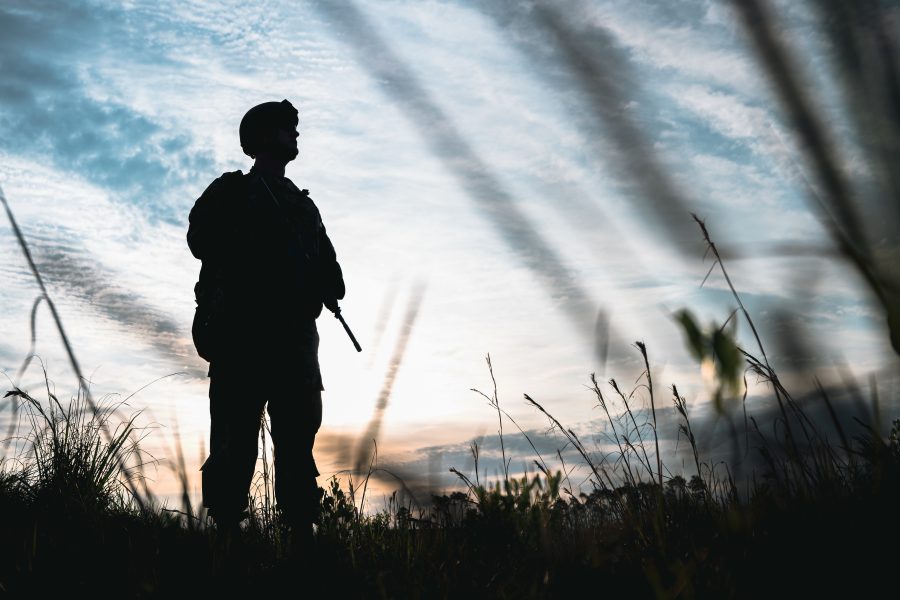The Department of the Air Force has issued new guidance laying out the steps it will take to involuntarily separate transgender Airmen and Guardians from military service.
An Aug. 14 memo to the force from Brian Scarlett, the Air Force’s interim assistant secretary for manpower and reserve affairs, and an Aug. 12 update to service regulations offer the first look at how the Department of the Air Force plans to oust its members who do not comply with Defense Secretary Pete Hegseth’s directive to bar trans troops.
Panels of fellow service members will review evidence of an Airman or Guardian’s history of gender dysphoria based on their medical and personnel records. If the board finds that someone has been diagnosed with or shows symptoms of the condition, the department requires it to recommend separation.
Sparta, an advocacy group for transgender service members, argued the new policy eliminates transparency and places “identity over merit and paperwork over judgement.”
“The Air Force just created a separate set of rules for transgender members under the illusion that fairness still exists,” the organization said in an Aug. 14 Facebook post. “Transgender troops are not asking for special favors, just equal treatment under the law and the right to due process.”
Transgender service members were given one of three options for departing the military: retirement, voluntary separation, or involuntary separation. Troops had awaited more direction on involuntary separations as they mulled which path made the most sense for themselves and their families.
By the end of August, the memo said, the Air Force Chief of Staff will pick a general officer to oversee involuntary separation proceedings—a position known as the consolidated disposition authority.
That officer will convene boards to consider whether transgender troops referred for separation should be let go. Airmen and Guardians who have not been approved to retire or separate of their own volition will be fired.
An Airman Medical Readiness Optimization board, which considers whether people are medically stable enough for military service, will flag troops with a diagnosis or symptoms of gender dysphoria to their commander. Commanders are then tasked with referring those service members to the separation board.
Board hearings proceed like legal trials, with opening statements, witnesses, and the presentation of evidence—in this case, documents like medical records, exceptions to policy allowing troops to adhere to military standards for a different sex, or a request to change a person’s sex in the military’s electronic records, the new guidance states. Panelists will vote with secret ballots in closed session to determine whether separation is warranted.
Sparta criticized the process, arguing that it does not take into account service members’ service record, fitness, commander’s input, or performance—criteria typically taken into account when deciding the next step of someone’s career.
The memo bars transgender Airmen and Guardians from deploying while their separation is processed; troops may be placed on administrative leave if they do not comply with dress and appearance standards for their biological sex. Transgender cadets at the U.S. Air Force Academy and other commissioning sources will be disenrolled and discharged.
“Commanders will continue to support service members throughout the separation process, including advising them of the availability of mental health support and ensuring accountability while on administrative absence,” the memo said.
Separation differs from retirement in that troops must typically hit 20 years of service to be eligible for retirement and the benefits that offers, like a pension and health care. The Pentagon has tried to incentivize voluntary separations under the ban by offering a one-time payout twice as large as someone would get if they refuse to leave.
Anyone identified for separation will be denied participation in Skillbridge, the military’s job transition program that can help troops looking to apply their niche skills to the civilian job market.
Hegseth contends that a history of gender dysphoria—the disconnect between a person’s sex at birth and the gender they most identify with—or transition treatment is incompatible with military service. Transgender troops have served openly since 2016.
It’s unclear how many service members may be affected by the policy. A senior defense official said in February that more than 4,200 troops had been diagnosed with gender dysphoria. Not all transgender people are diagnosed with gender dysphoria, and not all who are diagnosed opt for surgery or hormone therapy to transition to their preferred gender.
Bree Fram, a transgender Space Force colonel who is retiring in December, believes hundreds or thousands of Airmen and Guardians may have opted for involuntary separation. But many have likely not identified themselves or have not yet been formally notified of separation proceedings, she said.
Fram spoke to Air & Space Forces Magazine in her personal capacity; her views do not necessarily reflect those of the Defense Department or the U.S. government.
The Air Force has said it wants to provide a “clear and respectful process” for Airmen and Guardians who must leave under the ban. Fram said the policy’s implementation has felt anything but clear and respectful to those affected.
“We’ve seen shifting deadlines, abrupt reversals of previously approved retirements, and, most recently, limits on service members’ ability to appear before a board of peers and receive an impartial hearing,” she said. “Paired with direction that members must either appear at the board adhering to ‘standards associated with their biological sex’ or forgo appearing, [it] forces an untenable choice: appear as themselves and risk punitive action, or waive the chance to speak to their own record.”


